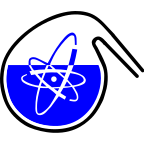Speaker
Description
Particle Induced X-rays Emission (PIXE) analysis is non-destructive method used in many fields of interest. With this method, an absolute concentration of investigated elements can be determined at ppm levels. Collaboration between the Medical Faculty and the CENTA laboratory was set up to use PIXE analysis for determination of iron concentrations in rabbit and human brain tissues, which offers 2 or more orders better resolution than Energy-Dispersive X-ray Spectroscopy (EDX). First PIXE measurements and determination of iron concentrations were done for rabbit brain tissues which were placed on thick silicon wafers. Secondly, instead of the thick silicon wafer we focused on the development of a thin sample holder dedicated for a human brain tissue. A new sample holder consists of the square-shaped plastic frame and a mylar foil which is attached to the frame using a double-sided tape and promises significant background reduction in comparison with the thick silicon wafer. With this configuration, a thin brain tissue (~ 5 $\mu$m) can be placed on this sample holder and can be measured using PIXE method as a thin sample as more than 99.99 % of proton beam passes through the sample. This holder can be also used for EDX and other measurements. Preliminary results of iron concentration measured in a healthy human brain tissue (substantia nigra) exhibit an inhomogeneous iron distribution with concentrations up to 2 $\mu$g/cm$^2$. A comparison of the gender, age or health status dependency on iron concentration distributed in human brain tissue measured by PIXE and those carried out by EDX method will be presented, as well as a comparison of simulations of proton (PIXE) and electron (EDX) beam interactions with the brain tissue samples.

